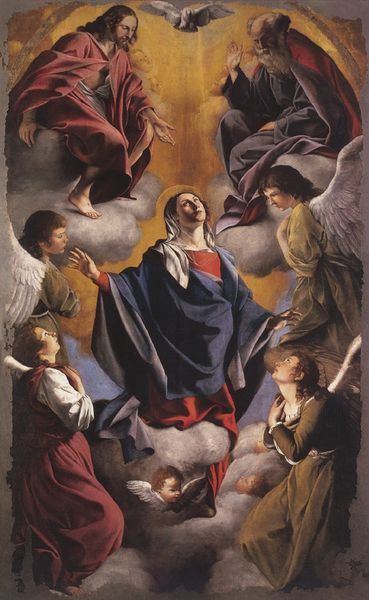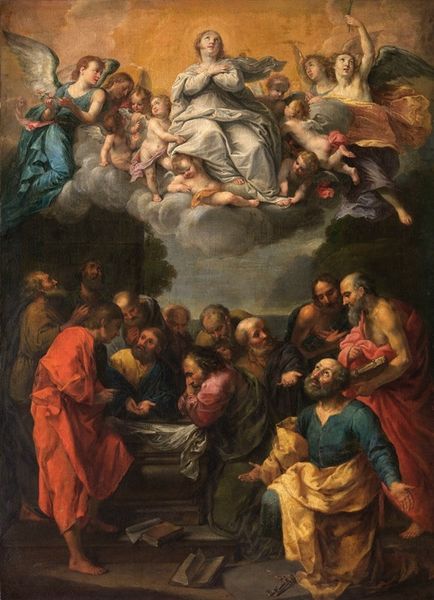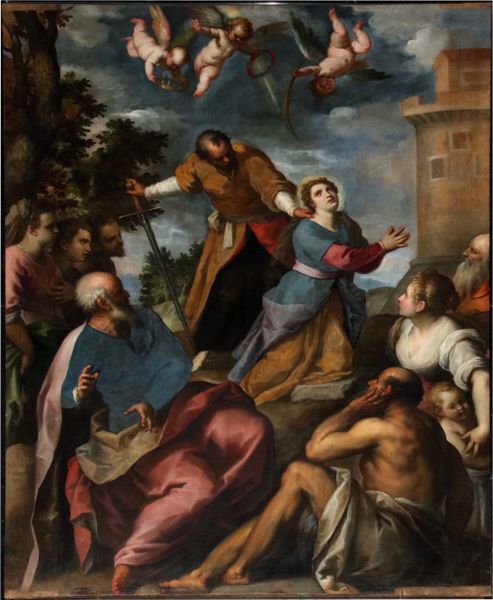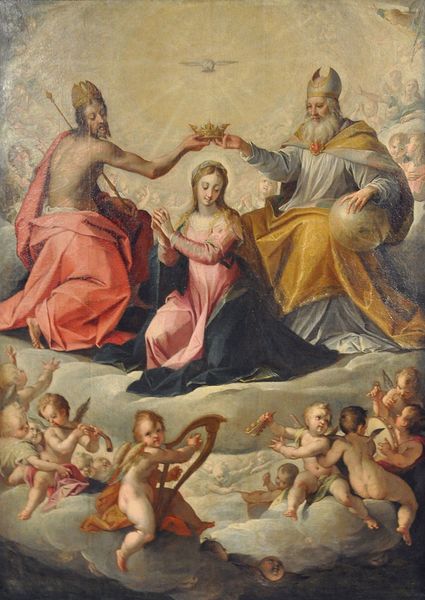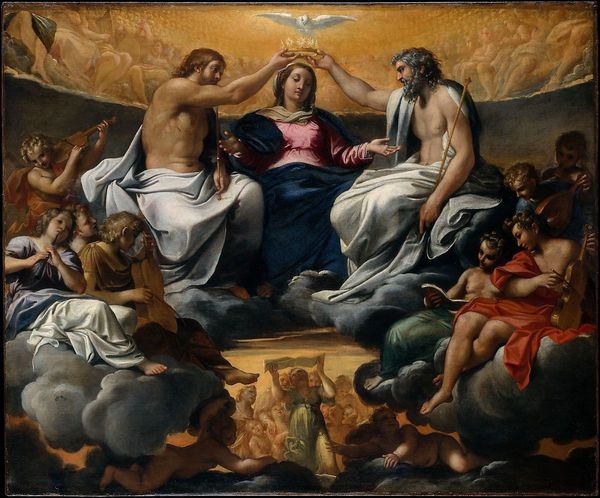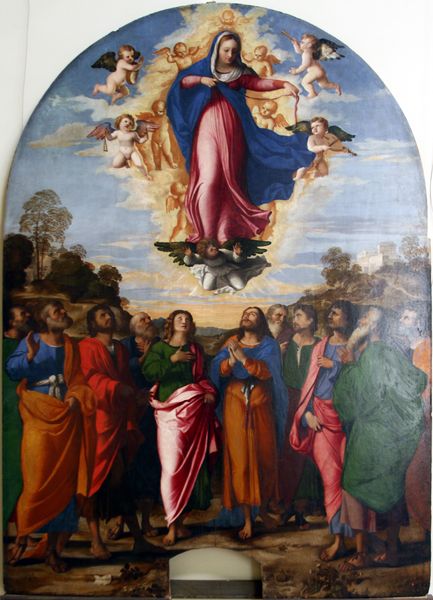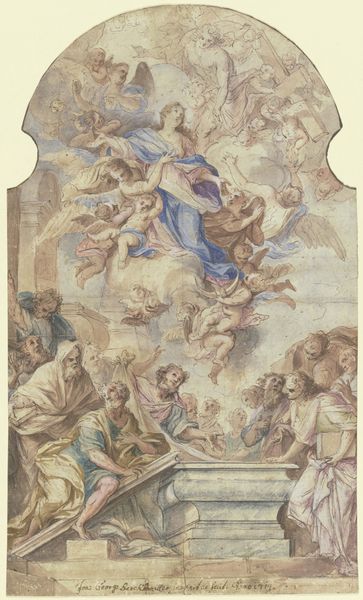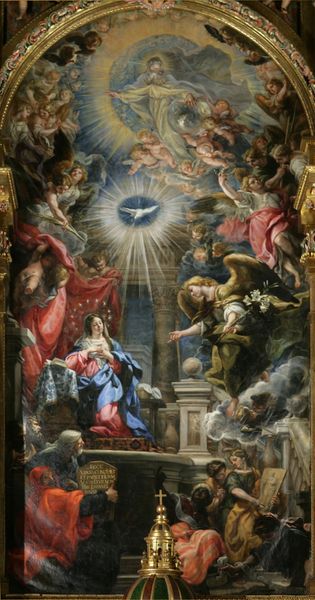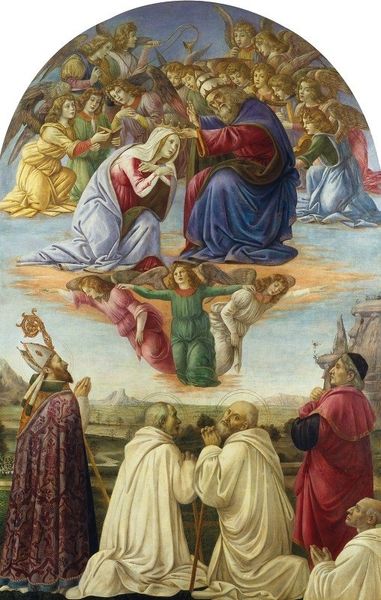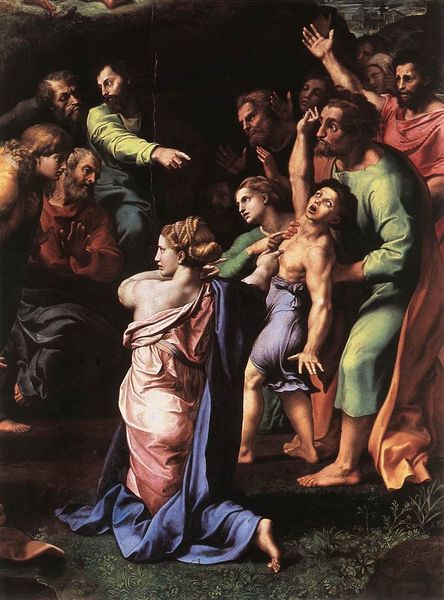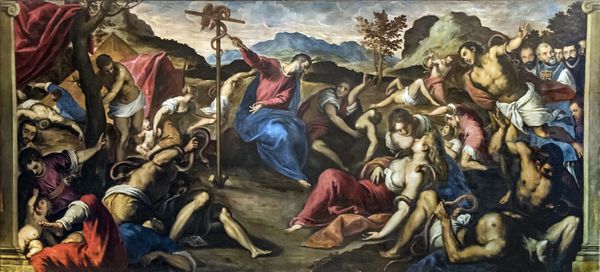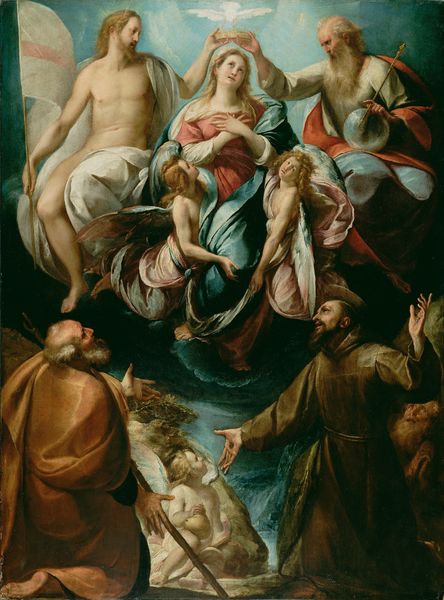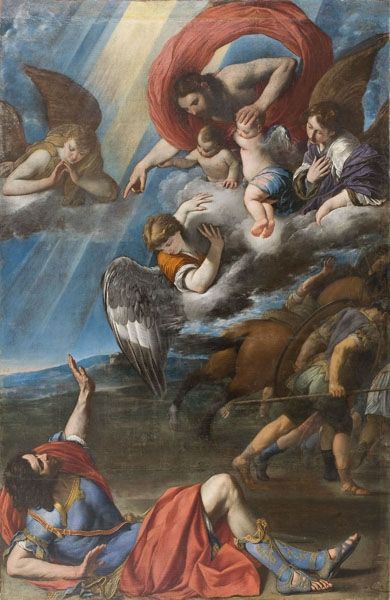
The Assumption of the Virgin 1577 - 1579
0:00
0:00
painting, oil-paint
#
portrait
#
painting
#
oil-paint
#
figuration
#
11_renaissance
#
oil painting
#
history-painting
#
italian-renaissance
#
portrait art
#
virgin-mary
Dimensions: 403.2 × 211.8 cm (158 3/4 × 83 3/4 in.) Weight with frame: 331 lbs/ 150.139 kg
Copyright: Public Domain
Curator: What strikes me first about El Greco’s "The Assumption of the Virgin," completed between 1577 and 1579, is how the elongated figures seem to defy gravity. It is breathtaking, isn’t it? Editor: It is certainly dynamic. The upward movement is undeniable, guided by the arrangement of colors. Look how he uses contrasting blues and reds to draw our eye upwards, reinforcing that sense of ascension. Curator: Beyond the immediate visual experience, it's crucial to remember the socio-political climate in which El Greco created this work. As part of the Counter-Reformation, art was instrumental in reasserting Catholic doctrine. Depictions of the Virgin Mary, like this one, served to solidify her divine status in the face of Protestant challenges. Editor: An interesting point, but notice also the masterful use of impasto, particularly in the clouds and drapery. The texture adds depth, while the swirling brushstrokes enhance the feeling of celestial motion. Curator: And this particular work's commission for the church of Santo Domingo el Antiguo. Its initial placement was politically strategic, intended to communicate specific religious messaging and influence public devotion. How did its reception then affect future such commissions? How might viewers respond today to a representation so entrenched in power? Editor: Well, the artist cleverly juxtaposes earthly realism, evident in the apostles, with an almost abstract rendering of the heavens. He used the golden light emanating from the top to flatten space, blurring the line between the material and the divine, thereby resolving some inherent tensions. It works effectively in uniting both earthly and divine figures on the same canvas. Curator: Perhaps the power of this work resides in its capacity to generate different, albeit potentially conflicting interpretations shaped by history. My engagement is constantly reshaped when considering gender, faith, and politics through the scope of art history and broader cultural perspectives. Editor: It leaves us with an impressive exercise in pictorial composition; El Greco was really stretching formal constraints.
Comments
No comments
Be the first to comment and join the conversation on the ultimate creative platform.
